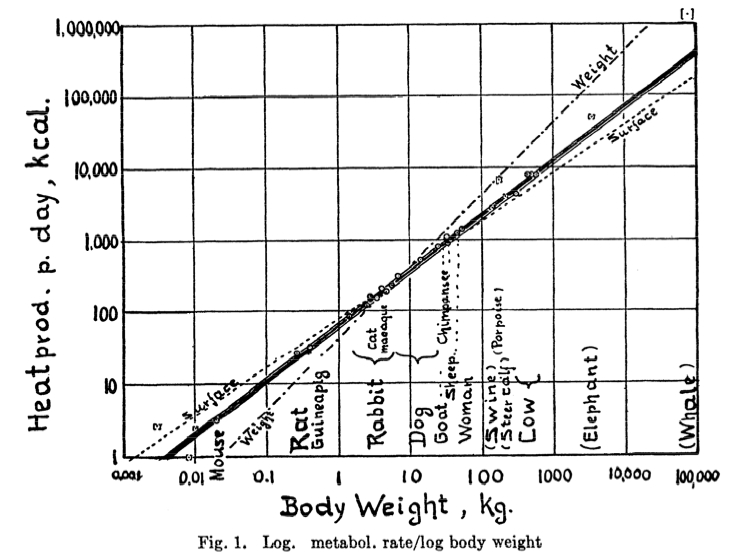
Large animals have slower metabolisms than small ones. A mouse must eat about 35% of its body mass every day not to starve whereas a human can survive on only 2%. The relationship follows a power law: basal metabolic rate (R) is proportional to the ¾ power of an animal’s mass (M). This relationship, the Kleiber Law, can be drawn as a straight line on a log-log plot. This relationship holds, from simple organisms to most complex ones, from microbes to whales and even forests, across 27 orders of magnitude in body mass. Small adults of one species respire more per unit of weight than large adults of another species because a larger fraction of their body mass consists of structure rather than reserve; structural mass involves maintenance costs, reserve mass does not.
Smaller people need considerably less calories than tall people. An individual of 150cm in height needs approximately 23% less calories than a person of 180cm in height: An extremely significant decrease.